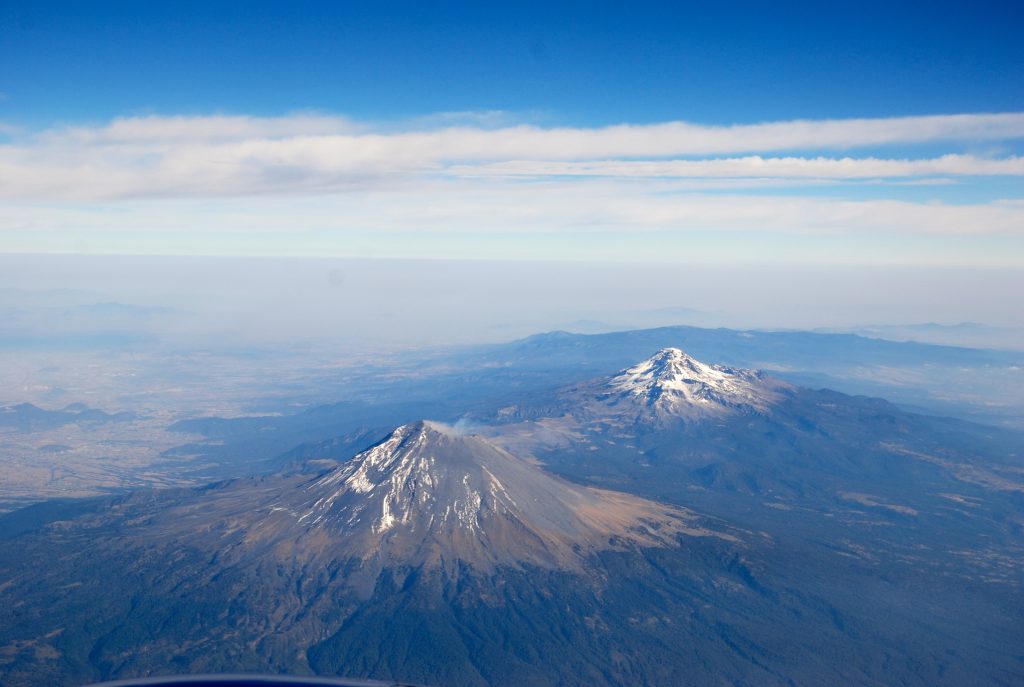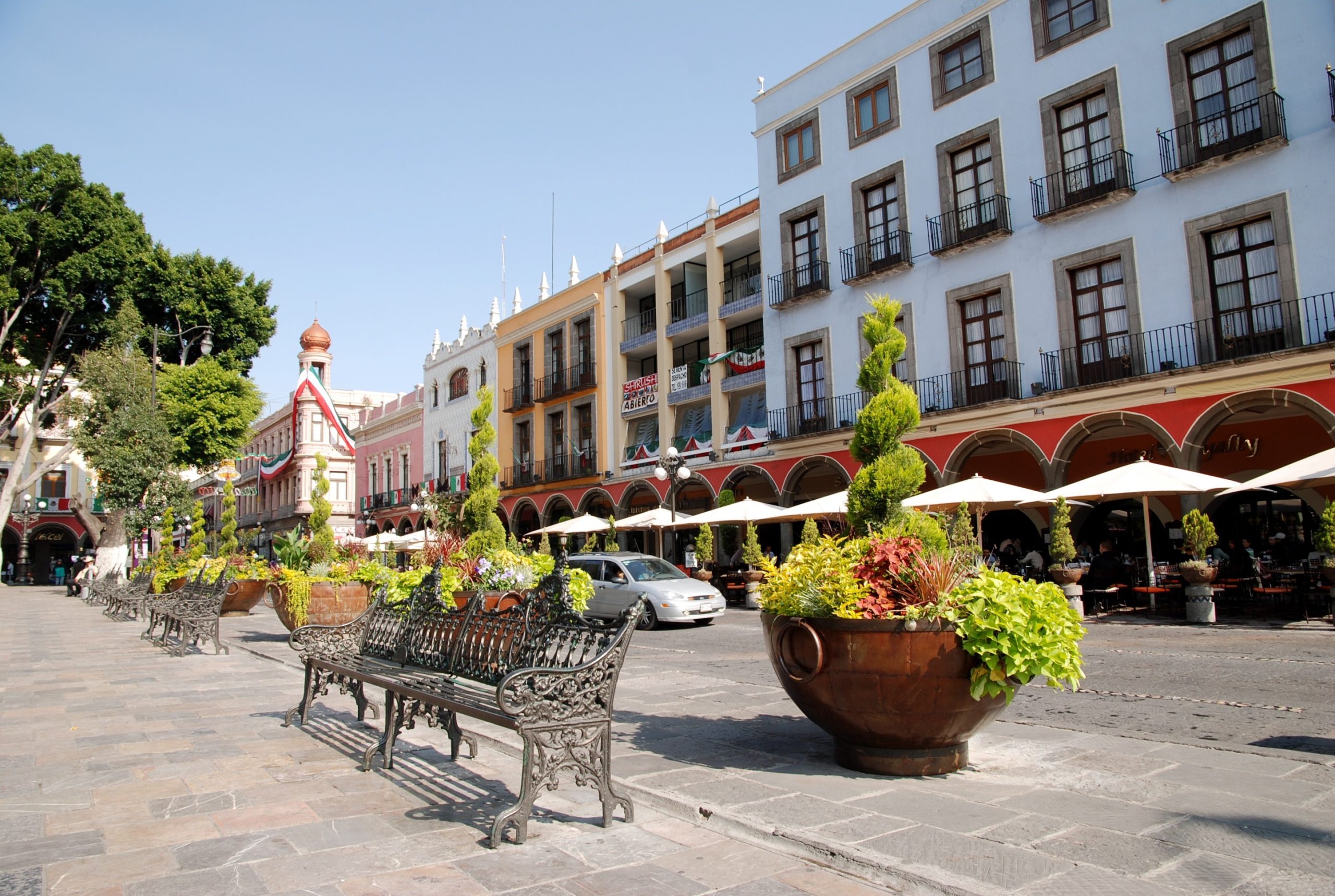One of Mexico’s most fascinating yet least explored by overseas visi tors is ancient Puebla. It lies less than two hours east and south of Mexico City. It in some way’s challenges the Capital as one of Mexico’s most enthralling cultural destinations. Puebla is full of life, movement, and memory. A rich Indian soul, the legacy of the Spanish Conquest, and modern expressions of art, culture and contemporary avant-garde Mexican city life make this an excellent choice for the first-time visitor and Mexico for living.
Combined with neighboring Tlaxcala state, Puebla offers an insightful encounter with a land and people highly influenced by the region’s crossroads location between Mexico’s gulf coast and high plateau cultures. Since pre-Conquest days, Puebla’s fate has been closely tied to the empires that controlled Mexico’s central plateau.

Climbing eastward from the Valley of Mexico past two of Mexico’s tallest peaks, Puebla has a territory of 33,919km2 and ranks 20th out of 32 states in size. The state is located between the Sierra Nevada and the Sierra Madre Oriental. Its landscape is mountainous. For ests and fertile plains, rivers, springs, and reservoirs underscore the State’s ecological diversity. Four of Mexico (and North America’s) tallest peaks loom on the horizon: to the east is volcanoes Pico de Orizaba or Citlaltepetl (5,747m/18,855f), to the west loop active volcano Popocatépetl (5,452m/17,887ft), and Iztaccíhuatl (5,286m/17,342ft) and to the north is Malinche (4,461m/14,636ft).
Puebla’s irregular shape allows it to somehow border SEVEN of Mex ico’s most culturally endowed states: Veracruz, Oaxaca, Guerrero, Morelos, State of Mexico, Tlaxcala, and Hidalgo. Playing as a human and cultural corridor for millennia, the Valley of Puebla linked Mex ico’s gulf coast (including Olmec, Mayan, and Totonac cultures) with Mexico highland interior.
The Puebla region is one of the earliest occupied areas of ancient Mexico. Every major Pre-Columbian civilization had some con tact with the region, mostly via important trade routes and religious pilgrimage crossing Mexico’s central plateau. The Toltecs, Nahuatl, Otomí, Chichimecs, and Xicalanc Olmecs inhabited the region. By the 10th century Nahua tribes had arrived and beginning in the 15th century the Mexicas (Aztecs) dominated the entire area. As testament to the region’s ancient past, Puebla holds a cultural concoction of 4,930 named communities. Many towns (especially those of the Sierra Mixteca to the south and Sierra Norte) hold dearly their traditions, festivals and ethnic diversity dating back thousands of years.
One of Mexico’s most significant archaeological sites, Cholula, lies 8 km west of Puebla City. At Cholula (the state’s main settlement when the Spaniards arrived in 1519) ancient
Mexico’s most revered religious shrine and ceremonial center brought pilgrims from distant lands. The Mesoamerican God Quetzalcoatl was revered here. Legend tells of how he stopped here to impart wisdom and religious doctrine on his way to the eastern sea and departure from Mexico. Cholula’s Great Pyramid of Tlatchihualtepec (Tepanapa) is the largest pyramid ever built, and is capped by a Spanish
church, a classic symbol of the Conquest.
The Spanish conquest had a far-reaching impact on the region. The founding of Puebla de los Ángeles, in 1531 blossomed into one Latin America’s best examples of baroque architecture and one of Mexico’s true architectural and cultural epicenters. Spanish influence left its mark on the local cuisine whose fusion of indigenous and Spanish influences created culinary traditions cherished by Mexican and foreign visitors alike.

The State of Puebla is full of things to do and places to visit. Outside of Puebla City, towns are small yet reveal world-class archeological sites, a great variety of 16-18th century Spanish architecture, and pristine wilderness of streams, towering mountains, and forests. The State is also home two UNESCO World Heritage sites: the Historic Centre of Puebla City, and the two-state route (Puebla and Morelos States) linking a series of fourteen16th Century Franciscan Missions on the slopes of still active Mt. Popocatépetl.
For shoppers and art lovers, Puebla is known internationally for its hand-painted ceramics. Art and dishes are still done in a style imported from the Spanish city of Talavera de de la Reina in the 16th century. Mexican talavera takes many forms, from colorful painted tiles (azulejos) with Arabic designs that adorn homes, churches, fountains, and municipal buildings, to hand-painted pottery and dishes sold in the city’s shops and markets.
In sum, Puebla for living is a captivating combination of history, ancient Amerindian and Spanish culture, haute cuisine, and off-the- beaten-path adventure. Beyond its hip and historic Capital, Puebla offers relaxed rural settings studded with both archaeological and colonial- era attractions. And with tiled dome cathedrals set against snowcapped volcanoes and green valleys, Puebla is one of Mexico’s most eye-pleasing experiences, that also offers modern amenities (every box store is here), albeit at 7,000 feet altitude.



